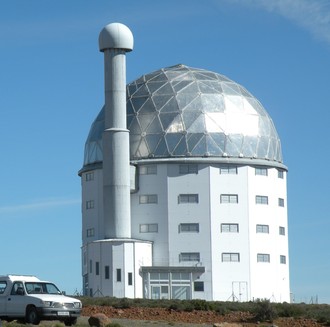
Strong and broad emission lines are the most characteristic properties of active galaxies. They allowed Maarten Schmidt in 1963 to determine the cosmological character of quasars.
The reason for formation of such lines was still a puzzle, as relatively large amount of material is needed to produce strong lines through irradiation by the nuclear emission.
Recently Bozena Czerny, Krzysztof Hryniewicz, Janusz Kaluzny of the Copernicus Astronomical Center in Warsaw and Ishita Maity published a paper "Dusty origin of the Broad Line Region in active galaxies" which showed that dust forming in the accretion disk atmosphere is responsible for the phenomenon. The authors concluded that from the determination of the disk surface temperature at the radius where the lines form (this was done from the time delay between the lines and continuum (size) and the accretion disk theory). The temperature turns out to be always about 1000 Kelvin, independently of the other properties of the object, and this is the maximum temperature that the dust can form and exist.
Their result explained the observational relation between the size of the Broad Line Region and the source monochromatic luminosity.
If such correlation is of general nature it should also apply to high redshift quasars, and can be used to probe the spacetime properties. Therefore, using quasars one can determine the dark energy distribution in a similar way as from SN Ia.
Authors have started a project with the SALT telescope to observe a number of quasars for 5 years. Quasars' redshifts are chosen in such a way as to allow the detection of the magnesium line at 2800 A in the optical band. They will determine the line delay (expected delay is of order of 600 days). They will thus determine the absolute luminosity of each source, and they will measure the observed luminosity of each source. Thus it will be possible to establish luminosity distance vs. redhift relation for observed sources which will allow to test the distribution of the dark energy.
In the picture: building and dome of SALT. Credit: Wojciech Pych.






